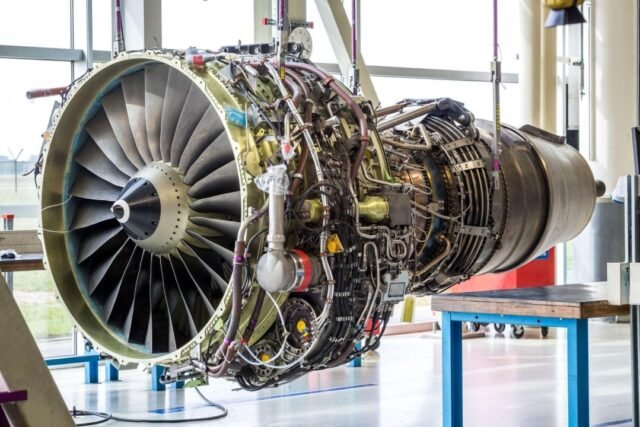Introduction: The Flight Ahead for Modern Aviation
Today’s aviation industry faces rising demands: lighter aircraft, improved fuel efficiency, and greater performance. Traditional metal structures struggle to meet modern needs. Instead, innovations in composite manufacturing and aerospace composites solutions are leading the way. These technologies help build aircraft that fly farther on less fuel, remain durable under stress, and cost less to maintain. With growing investment in research and practical application, composite materials are powering the next generation of flight.
Why Composite Manufacturing Matters
Composite manufacturing involves combining two or more different materials—like carbon fibre and resin—to create stronger, lighter structures. In aerospace, this leads to several key benefits:
- Reduced weight: Composite components weigh significantly less than metal, improving fuel economy.
- High strength-to-weight ratio: These materials often match or exceed metal strength while being lighter.
- Corrosion resistance: Unlike metal, composites do not rust, which extends the aircraft’s lifespan.
- Design flexibility: Composite parts can be shaped into complex curves and aerodynamic forms.
Therefore, composite manufacturing stands at the core of modern aerospace innovation.
Key Technologies in Aerospace Composites Solutions
Aerospace composites solutions use advanced manufacturing processes to meet the unique challenges of aircraft production. Engineers work with several specialised methods.
1. Autoclave Curing
This method uses heat and pressure to strengthen composite parts. It achieves near-metal-grade durability and excellent surface quality.
2. Resin Transfer Moulding (RTM)
Here, resin is injected into a fibre preform within a sealed mould. It allows for fast production of complex shapes and is ideal for larger components.
3. Automated Fibre Placement (AFP)
Robotic systems place carbon fibres precisely. This boosts consistency and reduces human error in parts production.
4. Out-of-Autoclave (OoA) Processes
OoA techniques like vacuum-bag-only curing reduce the need for large autoclaves, lowering energy usage and production costs.
Each of these technologies plays a key role in aerospace composites solutions.
Applications of Composite Manufacturing in Aircraft
Composite parts now feature across modern aircraft, especially in next-generation models.
Common applications include:
- Wings and winglets: These reduce weight and improve lift.
- Fuselage sections: Whole cabin sections can now be made from composite panels.
- Tail assemblies: Lightweight tails offer stability with reduced maintenance.
- Interior components: Seats, overhead bins, panel systems, and more.
Advanced composite manufacturing also enables more innovative structures—like cabin partitions that improve fuel efficiency and comfort.
Advantages for Airlines and Aircraft Manufacturers
Using composite materials offers multiple advantages throughout an aircraft’s lifecycle.
Benefits include:
- Fuel savings and reduced emissions: Lighter aircraft burn less fuel.
- Lower maintenance costs: Corrosion-resistant materials require less upkeep.
- Longer service life: Composite structures can last longer before needing replacement.
- Faster production: Automated processes reduce manual labour and build time.
As a result, aerospace composites solutions are not just high-tech—they make solid business sense.
Overcoming the Composite Manufacturing Challenges
Despite their benefits, composite materials also present challenges that manufacturers must overcome.
Primary concerns involve:
- Inspection and damage detection: Tiny cracks or delamination require advanced techniques like ultrasound scanning.
- Repair complexity: Fixing composite parts demands careful methods to avoid weakening the structure.
- Material cost: Carbon fibres and specialised resins are pricier than traditional metals.
- Regulatory hurdles: Authorities need robust data on performance under various conditions.
Nevertheless, ongoing research, improved testing, and better manufacturing techniques are addressing these issues.
Innovations Driving the Sector Forward
The future of aerospace relies on steady innovations in composite materials and processes.
Digital Twins and Simulation
Engineers now create virtual aircraft models to predict structural behaviour before physical testing.
Advanced Materials
Topics like thermoplastic composites, nanomaterials, and self-healing resins are being explored for next-gen solutions.
Additive Manufacturing
3D printing methods are beginning to produce composite parts with intricate internal geometry that traditional moulding cannot achieve.
Industry Collaboration
Companies, universities, and regulatory bodies are working together to create unified standards, which helps accelerate certification and implementation.
The Role of Sustainability
Environmental pressure plays a major role in aerospace design. Composite manufacturing supports sustainability through several pathways:
- Lighter weight leads to lower fuel consumption
- Reusable materials reduce production waste
- Less chemical usage than metal finishing
- Potential for recycling advanced composites in future designs
These facts explain why aerospace composites solutions receive growing attention from both governments and airlines focused on reducing carbon footprint.
Preparing for Composite-Centric Aviation
As the aviation industry adopts more composite structures, businesses in this field should consider strategic steps:
- Invest in skills and training: Engineers must learn advanced materials and inspection techniques.
- Build digital capabilities: Simulation software and machine learning help optimise designs.
- Collaborate on standards: Working with industry groups helps set best practices.
- Adopt sustainability goals: Green manufacturing processes increasingly determine contracts and regulatory approval.
Being proactive ensures companies remain relevant and competitive in a changing industry.
Conclusion: A Lightweight Future in Flight
Composite manufacturing and aerospace composites solutions point towards a future where aircraft are lighter, more efficient, and more environmentally friendly. By combining high-strength materials with novel manufacturing methods, engineers are making next-generation aircraft safer, more cost-effective, and more sustainable.
Despite challenges in inspection, cost, and regulation, continuous innovation is making composites the preferred choice. As the aviation sector evolves, anyone involved in aircraft design, manufacturing, or maintenance must understand and embrace the benefits of composite technology. With the right strategy and investment, composite-driven growth can transform the future of flight.







